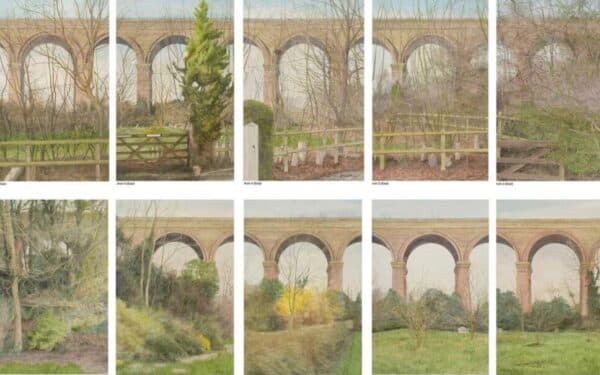Edinburgh is much the same as it always has been, with its castle on the hill, all kitschy, puffed up Victoriana, the New Town laid out in neat squares and gentle curves, bracketing off the North of the city beyond Princes Street, the decrepit mock medieval Old Town, and Arthur’s Seat, a little mountain on the edge of the city, leaving an impression that falls just short of The Sublime.
Edinburgh gives us History, reimagined as carnival show, as theme park – look over there, on Calton Hill, the National Monument, a ruined Parthenon redux, a portion of the glory of Greece and Rome’s grandeur. Ambivalence runs through Edinburgh’s many crowded fictions, its kaleidoscope of miniature horizons – does the city amount to something more than this sense of endless play?
And when I come back to Edinburgh, I return unsure too.
I grew up here and went to school here – one of those gloomy copies of the English public schools, set up in the nineteenth century to educate the sons of a nascent Anglo-Scottish elite that had greatly benefited from the stable political settlement afforded by union with the Auld Enemy down south – ‘New Scots’ fit for a British Empire and the dream of a British world order. It’s a form of education that is rather out of place in 21st century Scotland, with its quaint civic nationalism and gentle, apologetic Unionism.
My family home was sold a few years ago. I have few ties here now. When I was a teenager, I always wanted to leave the place. When I was at university, I didn’t want to come back.
I loved it here once. But that was so long ago. There I am, walking back from a cello lesson, my cello in its big, red case, one long, sun-baked evening, over The Meadows. And there I am too, lying back one afternoon, secreted away in Queen Street Gardens, discovering Bob Dylan on my new iPod Classic.
It is always true that love diminished lends experience a strange and sickly permanence. And my love for Edinburgh faded a long time ago. Memory has done its work and fastened Edinburgh down and sealed those images in hard aspic, things that were meant to remain liquid mercury, and landscapes that were meant to remain fretted through with quicksilver mystery.
I have a quite different relationship to the Fringe, with its own fever-dream intensity, quite different to the settled patterns of Edinburgh life. I always come up for it. I spent the whole month of August here last year, helping out with friends’ shows and seeing everything I could. There’s bad stuff, of course, and really quite good stuff. There are really desperate shows and anxious shows and tired shows and weird shows and all sorts of things to see.
There are, of course, two festivals. There’s the Edinburgh International Festival, founded in 1947, with the mission statement to promote the ‘flowering of the human spirit’. Many of the pre-war arts festivals (Salzburg, Vienna for example) no longer had homes in the old bombed out concert halls and theatres. So, Edinburgh was founded as a new home for universal high culture. And in the first year, the Jewish conductor Bruno Walter, who was persecuted by the Nazis, was brought together with the Viennese Philharmonic for a famous concert.
If the International Festival embodied the post-war spirit of collective healing, the Fringe is something altogether more demotic, libertine in ethic. It started as an upstart competitor with the festival. Shows sprang up in pubs, smaller venues, theatres outside of Edinburgh. And soon it began to attract all kinds of strange art forms – alternative comedy, sketch troupes, music hall entertainers and so on. And it’s grown and grown, surpassing the establishment International festival. In 2017, a staggering 2,696,884 tickets were issued at the Fringe in 2017 with almost 4,000 shows at over 300 venues.
But it’s not the number of shows or the vibrancy of the atmosphere that make the Fringe so special. It’s just so fascinating seeing how people’s relationships with Edinburgh change the more time they spend here, particularly those who are performing. At first, there’s the excitement at the whole drama of Edinburgh, with its endless wonderful fictions. That leaves its imprint, its fragment of permanence. Time and experience expand: romances begin; magic flits in and out of the shows and the streets around them.
Most comedians find that their dreams founder here; most shows close for good after one run. Most of the whole carnival is entirely useless, and wholly fleeting. How easy it is to fall out of love with this place, how easily this strange, weird city lodges itself awkwardly into experience. So, don’t listen to the Fringe’s vocal detractors (‘Too commercialised!’ ‘Too many tourists!’). Believe me – there’s nothing really like it, being in Edinburgh, at this time of the year…



